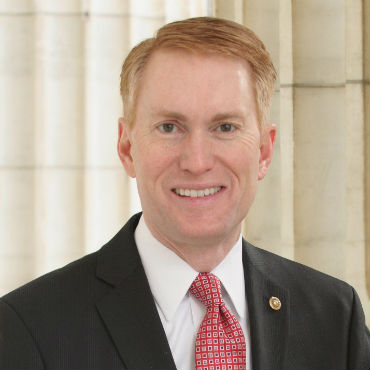Senator: Rigid hiring process pushes millennials from federal work

Sen. James Lankford (R-Okla.) said agencies are missing out on younger workers because of the government's rigidity, particularly its protracted hiring process.

Sen. James Lankford (R-Okla.) said the "lengthy and cumbersome" federal hiring process keeps agencies from attracting talented young workers.
Agencies are missing out on hiring younger workers because of the government's rigidity, particularly its protracted hiring process, according to a lawmaker with oversight of the federal workforce.
During a Senate Homeland Security and Governmental Affairs' Regulatory Affairs and Federal Management Subcommittee hearing on Sept. 29, Chairman James Lankford (R-Okla.) stressed the importance of attracting millennials to the federal workforce and cited Government Accountability Office statistics that 600,000 federal employees will be eligible to retire next September.
"That's a staggering 31 percent of the workforce," Lankford said. "Unfortunately, those under 35 years of age make up only 16 percent of employees."
He expressed concern that agencies will be unable to attract top-notch talent due to the "lengthy and cumbersome" federal hiring process, which on average "takes 100 days to fill an open position."
He added that "we're not spending time training managers and trusting people in the local entities. That is an area in so many places where the private sector has such rapid speed.... We need to have oversight for managers...but so they're not locked in a box so much where they think, 'I know a good person, but I can't hire them.'"
However, the Department of Homeland Security's chief human capital officer, Angela Bailey, said her agency has taken advantage of hiring authorities to fill mission-critical positions.
DHS used direct hiring authorities to extend 326 tentative job offers to candidates at the department's Cyber and Tech Job Fair in July, Bailey said, adding that she would like to see the expansion of such authorities.
Mark Reinhold, the Office of Personnel Management's chief human capital officer, credited OPM's Hiring Excellence Campaign and the USAJobs.gov Agency Talent Portal for helping the government make progress in attracting talented millennials.
"People under 35 [years old] represented about 44 percent of new hires into the government in fiscal year 2015," which is a higher percentage than in the overall civilian labor force, Reinhold said.
He also pointed to OPM's outreach workshops at colleges nationwide and its Pathways Programs as ways the agency exposes students to federal work at a young age.
Robert Goldenkoff, GAO's director of strategic issues, applauded OPM's workforce efforts but said, "They need to do more." He suggested that lawmakers "hold OPM accountable for implementing GAO's recommendations."
Lankford expressed concern about whether millennials believe a government career is "rewarding or fulfilling." He received some pushback on that front, with members of the witness panel citing the work their agencies are doing to measure and improve employee satisfaction.
Reinhold pointed to OPM's administering of the annual Federal Employee Viewpoint Survey to help agencies identify key drivers of employee satisfaction and area where agencies need to improve.
Bailey said DHS, which has improved on its historically low employee satisfaction scores, now provides toolkits to leaders and has begun conducting "stay interviews," rather than exit interviews, to solicit feedback from current employees.
"Many of these things don't require money," she said. "A lot of these things just actually require paying attention to the small things."
NEXT STORY: SEA names new president


